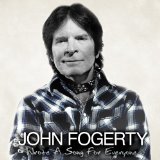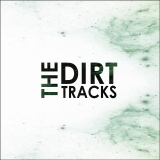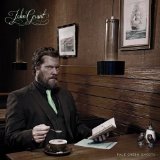 This started the way the best features do, as a conversation in the pub. We’ll let Allan take it from there.
This started the way the best features do, as a conversation in the pub. We’ll let Allan take it from there.
It’s one of the oldest tricks in the pop music book; if the song’s on its last legs and you still need another thirty seconds or so to get you up to the optimal time for radio play, then you deploy one the producer’s most potent tactical weapons – the trucker’s gear change. In its most basic form, the whole arrangement shifts up a tone or a semitone, to grab back your attention before the chorus repeats and fades. Usually, it just happens once, but that depends on how desperate you are (or how weak the song is). You might even get some clever stuff going on to get from one key to the next; when that happens, you get all classical and call it a modulation. What do they sound like? Let’s start with an absolute clunker.
“I Will Always Love You” – Whitney Houston
Considering the quality of the musicians available to producer David Foster, this TGC is bone-jarringly unsubtle; there’s no attempt to pretty it up by repeating a riff in the new key or moving through a few passing chords. Oh no; old key/bang/new key – we’re done. As if that’s not enough, there’s a whole bar of almost complete silence before the melody crashes back in again, maybe David Foster thought that the average listener couldn’t remember which key the song was in after 4 beats. Who knows; anyway it’s a crash/bang/wallop of the highest order and you can hear the teeth grinding off the flywheel:
“Love on Top” – Beyonce
OK, we’re now well and truly in the era of digital recording and production and it’s much easier and quicker to manipulate sounds. You can do a TGC with a mouse-click. If it’s so easy to do, why not do loads of them – one is good, two must be better. Beyonce co-produced this with Shea Taylor, so she’s sharing the blame here. In the last ninety seconds of the radio edit there are four, yes four upward key shifts as the chorus is repeated. It makes you wonder what it would be like if the key shift just kept repeating. As it happens, someone thought of that. Here it is with fourteen upward shifts:
“The Snake” – Al Wilson
Ah, the old Northern Soul classic. Fans will remember that one of the UK pressings of this song had a cover of the John Fogerty classic “Lodi” on the b-side. That’s not relevant, just me showing off. Sometimes you can get away with a few stick shifts if you’re building up to the climax of the song and that’s what happens here. At the end of the second verse, there’s a bass riff which is then repeated a tone higher and you’re in a different key. It’s not just a chorus repeated in exactly the same way but higher, it’s part of the process of moving the story along. And the same device is repeated at the end of the third chorus into the final verse as the song reaches its dramatic finale. Maybe I’m biased, but I think this is part of the arrangement of the song and that keeps it out of Room 101:
“Heat Treatment” – Graham Parker & the Rumour
You might think that any key change part way through a song would be agreed with the writer; it ain’t necessarily so. This was the title song of GP and the Rumour’s second album “Heat Treatment”, released in 1976, the same year as his debut “Howlin’ Wind” (two albums in a year and incessant gigs; musicians grafted in those days). Partway through the song, there’s a modulation; it’s quite musical – a two-bar horn section phrase takes the song up a tone. It’s not lumpy but it does the job fairly quickly. The problem is that it’s not part of generating extra excitement, just the opposite. It takes the song into a bass riff breakdown and the groove has to be built up again from scratch. Graham Parker made his feelings about it known when the album was remastered for CD; his sleeve notes refer to it as ‘that abusive key change’. Fair enough.
“Up the Junction” – Squeeze
This was the title track from the second Squeeze album, with a tip of the hat to Nell Dunn who wrote the novella of the same name. Glenn Tilbrook and Chris Difford were just beginning to realise their potential as songwriters and Jools Holland was still their keyboard player. This is a key change that is about as far from a trucker’s gear change as you can get. It’s a modulation that reflects a downbeat turn in the lyrics through a ten-bar bridge using minor chords before dropping a whole tone for a more upbeat verse and then, paradoxically, going back up by a whole tone for the downbeat final verse. Difford and Tilbrook characteristically messing with the conventions. Bits of “Up the Junction” trivia? There are no choruses and the title of the song doesn’t appear in the lyric until the last three words:
Oh, is it my turn for the albums? Ok, these five stood out way above the rest and they’re a pretty mixed bunch but I think that’s what Music Riot is all about. Have a listen to these if you can because there’s a lot of really good music here.
 When you’ve listened to a lot of blues and blues/rock (and believe me I have over the years), you understand how easy it is for even very good players and writers to slip into the blues clichés, lyrically and musically. Some writers understand that not every song has to be a twelve-bar blues with lyrics about bad booze and wanton women, and Aynsley Lister is one of those writers. His songs on “Home” are recognisably blues/rock but with a recognition that the genre has to move on lyrically and musically. On “Home”, there are songs about the state of the music business today, an elegy to an old friend, a couple of brilliant covers and a tribute to Gene Hunt. What more do you want? This is one of those albums that grabs you from the first listen and doesn’t let go.
When you’ve listened to a lot of blues and blues/rock (and believe me I have over the years), you understand how easy it is for even very good players and writers to slip into the blues clichés, lyrically and musically. Some writers understand that not every song has to be a twelve-bar blues with lyrics about bad booze and wanton women, and Aynsley Lister is one of those writers. His songs on “Home” are recognisably blues/rock but with a recognition that the genre has to move on lyrically and musically. On “Home”, there are songs about the state of the music business today, an elegy to an old friend, a couple of brilliant covers and a tribute to Gene Hunt. What more do you want? This is one of those albums that grabs you from the first listen and doesn’t let go.
“Wrote a Song for Everyone” – John Fogerty
 Ok, I’m going to admit to a slight bias here; I’ve been a fan of John Fogerty for much longer than I care to admit to. The first time I strapped on a guitar and played (badly) in front of an audience, the song the band played was the Creedence Clearwater Revival single, “Up Around the Bend”. I’m pleased to say that John Fogerty’s career as a performer has been much longer and more successful than mine.
Ok, I’m going to admit to a slight bias here; I’ve been a fan of John Fogerty for much longer than I care to admit to. The first time I strapped on a guitar and played (badly) in front of an audience, the song the band played was the Creedence Clearwater Revival single, “Up Around the Bend”. I’m pleased to say that John Fogerty’s career as a performer has been much longer and more successful than mine.
There are a couple of ways of looking at this album; you can see it as a cynical rehash of old material for a few quick bucks or you can see it as an opportunity to work with kindred spirits to put a twenty-first century polish on some classic twentieth century songs. You can probably guess which way I’m leaning on this one. If you only listen to one song on this album, listen to “Hot Rod Heart”; John Fogerty is joined by guitarist Brad Paisley and the final minute and a half of the song is the joyous and totally self-indulgent sound of two superb players having a great time trading guitar licks. If this doesn’t make you smile, you don’t like music. And that’s before we get on to the reworkings of the classic Creedence songs “Lodi”, “Long as I can see the Light”, “Who’ll Stop the Rain” and the less well-known “Wrote a Song for Everyone”. Oh, nearly forgot, “Proud Mary”. Superb from start to finish.
“The Dirt Tracks” – The Dirt Tracks
 If you’re really into music, it doesn’t matter how much you’ve heard, you still love it when you hear something original and fresh (and I’ll be completely honest and say something that no-one else has written about yet). My epiphany this year was an invitation to see Spanish indie band The Dirt Tracks in central London. The audience was four people, and that included me and the band’s manager. It didn’t bother the band because they pulled out a storming set. I was given a copy of the band’s debut album and I promised to review it. When I listened to it, I was hooked.
If you’re really into music, it doesn’t matter how much you’ve heard, you still love it when you hear something original and fresh (and I’ll be completely honest and say something that no-one else has written about yet). My epiphany this year was an invitation to see Spanish indie band The Dirt Tracks in central London. The audience was four people, and that included me and the band’s manager. It didn’t bother the band because they pulled out a storming set. I was given a copy of the band’s debut album and I promised to review it. When I listened to it, I was hooked.
It’s heavily influenced by British indie, but there are elements of late ‘60s psychedelia in there as well as samples and a huge guitar attack. As if that wasn’t enough, the album includes the experimental single “Kaleidoscope” which combines two similar stand-alone songs across the stereo spectrum to create a third song. It’s quite a disorientating effect designed to demonstrate the difference between left- and right-brain processing and it’s even more impressive when you know that it’s written (like the rest of the album) in writer Santiago Coma’s second language. Very impressive debut album.
“Radio (in my) Head” – Various
 This one deserves a special mention for overcoming logistical difficulties; there are artists from 14 different countries on this collection of reworkings of Radiohead songs. There’s absolutely no filler on this album and there are a few absolute corkers. Some of the versions stay reasonably close to the Radiohead template, while The Stoneface Travellers and Yoya put their own stamp on “My Iron Lung” and “Wolf at the Door” respectively. The project was initiated by John O’Sullivan, MD of Bandhouse Records and pulled in contributions from his contemporaries at the London College of Contemporary Music (including Amy Hannam and Beth Mills, who you may have seen on X Factor)and and a few others picked up on the journey. Anyway, it’s a bostin’ album and you should all give it a listen.
This one deserves a special mention for overcoming logistical difficulties; there are artists from 14 different countries on this collection of reworkings of Radiohead songs. There’s absolutely no filler on this album and there are a few absolute corkers. Some of the versions stay reasonably close to the Radiohead template, while The Stoneface Travellers and Yoya put their own stamp on “My Iron Lung” and “Wolf at the Door” respectively. The project was initiated by John O’Sullivan, MD of Bandhouse Records and pulled in contributions from his contemporaries at the London College of Contemporary Music (including Amy Hannam and Beth Mills, who you may have seen on X Factor)and and a few others picked up on the journey. Anyway, it’s a bostin’ album and you should all give it a listen.
“Pale Green Ghosts” – John Grant
 Our contributors at MusicRiot all have their own musical preferences and areas of expertise, but we’re all passionate about music and our paths tend to intersect fairly often; this is one of those cases. John Preston raved about this album several months before 6 Music latched on to John Grant and he was absolutely right; this is a great album. John Grant took a lot of flak over moving from acoustic instruments to electronic on this album (a nod to Dylan’s “Judas” moment there), but it’s still a classic singer-songwriter album. There are moments of humour, sneering, viciousness and painful emotional honesty on subjects as difficult as an HIV diagnosis. When it’s funny, it’s very funny, when it’s vicious, it’s very vicious and when it’s about honesty, it will make you cry. Even the remixes are worth a listen.
Our contributors at MusicRiot all have their own musical preferences and areas of expertise, but we’re all passionate about music and our paths tend to intersect fairly often; this is one of those cases. John Preston raved about this album several months before 6 Music latched on to John Grant and he was absolutely right; this is a great album. John Grant took a lot of flak over moving from acoustic instruments to electronic on this album (a nod to Dylan’s “Judas” moment there), but it’s still a classic singer-songwriter album. There are moments of humour, sneering, viciousness and painful emotional honesty on subjects as difficult as an HIV diagnosis. When it’s funny, it’s very funny, when it’s vicious, it’s very vicious and when it’s about honesty, it will make you cry. Even the remixes are worth a listen.
If you want to learn a bit more about these albums, you can search for the reviews on the site. Or you could give them a listen.


